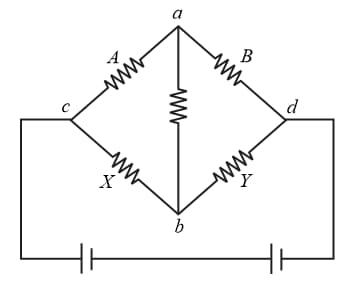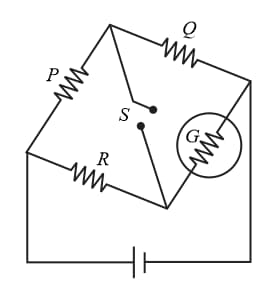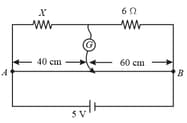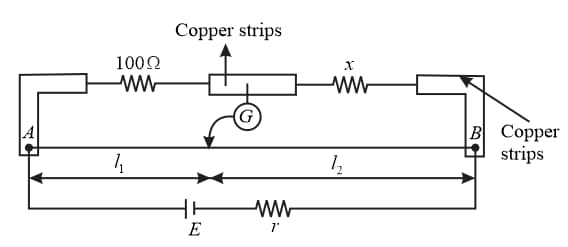MEDIUM
JEE Main
IMPORTANT
Earn 100
In meter bridge or Wheatstone bridge for measurement of resistance, the known and the unknown resistances are interchanged. The error so removed is
(a)end correction
(b) index error
(c) due to temperature effect
(d) random error
50% studentsanswered this correctly

Important Questions on Electrical Measuring Instruments
MEDIUM
JEE Main
IMPORTANT
In Wheatstone's bridge and . How much resistance must be put in parallel to the resistance to balance the bridge?
MEDIUM
JEE Main
IMPORTANT
In the Wheatstone bridge (shown in the figure) and . The direction of the current between will be

EASY
JEE Main
IMPORTANT
The figure shows a circuit diagram of a Wheatstone bridge to measure the resistance of the galvanometer. The relation will be satisfied only when

MEDIUM
JEE Main
IMPORTANT
In the circuit shown, a meter bridge is in its balanced state. The meter bridge wire has a resistance . The value of an unknown resistance and the current drawn from the battery of negligible resistance is

EASY
JEE Main
IMPORTANT
In a metre bridge experiment, null point is obtained at from one end of the wire when resistance is balanced against another resistance . If , then there will be the new position of the null point from the same end, if one decides to balance a resistance of against
MEDIUM
JEE Main
IMPORTANT
Two resistances are connected in two gaps of a metre bridge. The balance point is from the zero end. A resistance of is connected in series with the smaller of the two. The null point shifts to . The value of the smaller resistance in is:
EASY
JEE Main
IMPORTANT
In a practical Wheatstone bridge circuit as shown, when one more resistance of is connected in parallel with an unknown resistance , then ratio become is balance length and is a uniform wire. Then value of must be:

MEDIUM
JEE Main
IMPORTANT
A resistance is to be measured using a meter bridge, the student chooses the standard resistance to be . He finds the null point at . He is told to attempt to improve the accuracy. Which of the following is a useful way?
